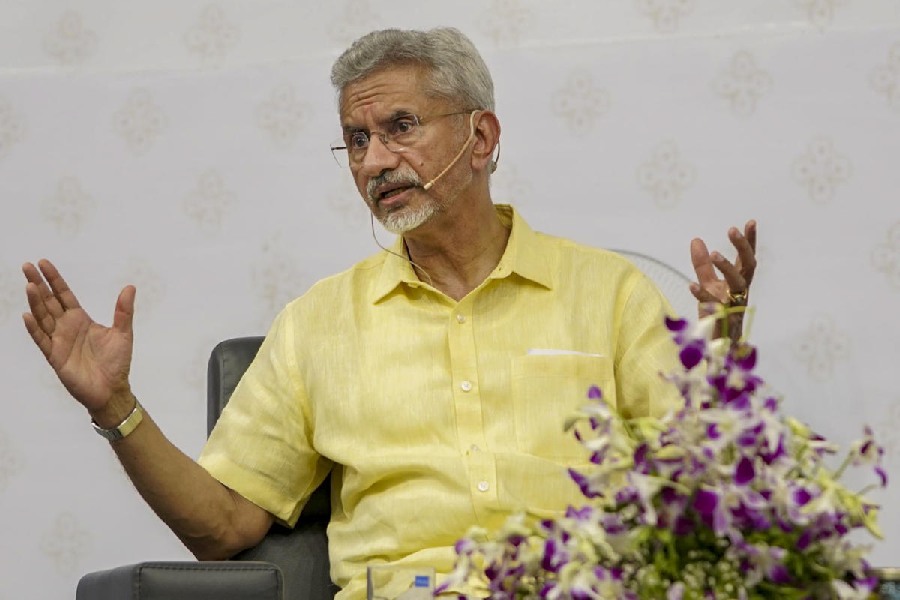 |
 |
| The Amrasani Kol at the foothills of Kajra and (below) the barren land at Bengali Bund in Lakhisarai. Pictures by Amit Kumar |
Bengali Bund (Lakhisarai), Feb. 14: Thirty-six-year-old Pankaj Kumar works hard everyday to get a good yield at his 1.5-bigha fertile land but fails miserably. Reason: lack of irrigation facilities in this drought-prone part of Lakhisarai district.
Like Pankaj, many villagers have a common dream — to irrigate their land with the help of natural water, which is available in abundance here.
Located at the foothills of Kajra Hills, the village has the potential to change its fate with the three water springs in the vicinity. But the Maoists have occupied the areas where water is available, making them inaccessible for the common people.
“I have to arrange diesel or kerosene at Rs 40-60 per litre to irrigate the fields but hardly manage to produce much. Drought is a recurring phenomenon here and every year we have to incur huge losses. But if the water from the hills are fetched, our fate could certainly change,” Pankaj said.
Poor and illiterate villagers, who are not aware of the process to divert the water from the hills to the villages, are waiting for the government intervention to bring water downhill.
On the other hand, Maoists have mastered the art of fetching water from the hills and are using the natural resource to their benefit.
According to Tulsi Koda (65), a farmer, water in large volume is available at three natural streams — Amrasani Kol, Kathutia Kol and Bijuria Kol — at the Kajra Hills. He added that if some measures are taken to bring the water here, over 200 acres of land could be cultivated. Bengali Bandh under Surajgara, 60km from Lakhisarai headquarters, has no basic infrastructure in place.
“We had earlier requested Prem Ranjan Patel during his poll campaign to help us fetch water from the hills. He assured us of it and we voted in his favour. But after he became the JD(U) MLA, he never bothered to visit the area,” said a villager.
“It is a contrast. Naxalites have the privilege to utilise the water but the government machineries do not have any idea how to use it for the benefit of common rural mass,” said Narendar Kumar, a social activist at Lakhisarai.
Many in the Yadav-Koda-dominated hamlet did not wish to be quoted but said they had decided earlier to contribute to the earth digging work to bring water from the three sources to Mai Sthan, a sacred place in the forest. But after the rebels killed six villagers in Karili on July 2, 2011, at the neighbouring Dharhara block of Munger district, the villagers do not dare to cross the forest and take up such work.
“People of Karili, who fetched water from a hilltop stream, had to face the wrath of the rebels because they do not want the Koda community to prosper,” said a villager from the Yadav community on condition of anonymity.
“But here at this hamlet both Yadavs and Kodas live peacefully and the social bonding is very strong between the two communities. This is one reason why the rebels have not yet been able to utilise the villagers for their vested interests,” said another villager.
According to sources, the area is a haven for Maoists.
“Since the area lies near the Naxalite-hit Dharhara and with dense forest covers, the rebels function from there easily. Up to 2011, the rebels used to hoist black flags at government schools on Republic Day and Independence Day every year,” the source said.
“It’s an ideal habitat for Maoists who have set up training camps here only because of availability of water. Because of their presence, we don’t have the courage to bring water to our fields,” said Bouna Koda, a villager.










